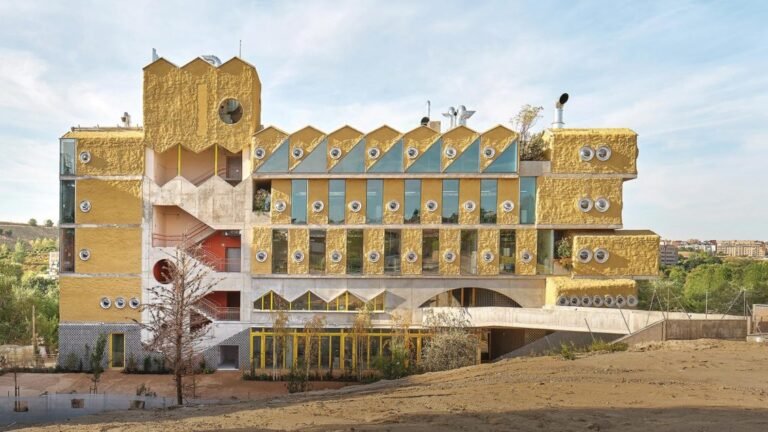Morphosis-Designed New Arts Campus Breaks Ground in Texas
Morphosis-Designed New Arts Campus Breaks Ground in Texas

The new arts campus, designed by global architecture and design firm Morphosis, has broken ground in Dallas, Texas. This marks the beginning of the first phase of construction for Edith and Peter O’Donnell Jr. Athenæum, a twelve-acre expansion of the University of Texas at Dallas (UT Dallas). The Athenæum complex will feature three main buildings: the Crow Museum of Asian Art (Phase I), a performance hall (Phase II), and a museum for the traditional arts of the Americas (Phase III). Phase I of the plan, the Crow Museum of Asian Art, is expected to be completed in 2024. The whole project is catalyzed by a $32 million donation from the O’Donnell Foundation.
This new cultural district, located at the southeastern edge of the UT Dallas campus, aims to become an arts destination for students, faculty, and the community. It also represents the latest milestone in a period of significant growth of the arts at UT Dallas, a school that had historically focused on science, engineering, technology, and business.

The Crow Museum of Asian Art will display a diverse breadth of ancient and contemporary artworks from Cambodia, China, India, Indonesia, Japan, Korea, Myanmar, Nepal, Pakistan, Thailand, Tibet, and Vietnam. For this function, Morphosis designed a 16,000 square feet of flexile gallery space in addition to its state-of-the-art conservation lab, classroom spaces, administrative offices, and the Brettell Reading Room. The entire collection is donated by the Crow family along with $25.45 million of support funding.
Related Article
Civic Works: Iconic Dallas Landmarks Rethinking Design in Texas
The museum for the traditional arts of the Americas, to be built at a later stage, spotlights the university’s growing collection of Latin American folk art, consisting of the collections of Roger Horchow, the Laura and Dan Boeckman’s Collection of Latin American Folk Art, and the Bryan J. Stevens Collection of Masks of the Sierra de Puebla.

The heart of the project is defined by a two-acre plaza, flanked by new buildings on two sides: the three cultural institutions to the west and a 1,100-car parking structure to the east, masked by a freestanding wall. The three cultural buildings are all designed with second floors that are larger than the ground floor. This creates shaded exterior spaces that allow for all the buildings to fuse with the plaza. The landscaped gardens, tree-lined walkways, and paved open spaces thus become spaces for studying, student gatherings, performances, art displays, and everyday campus life. Contemporary sculptures from the Crow Museum’s collection will also help define the character of these spaces.
The entire Athenæum complex is designed by Los Angeles-based architecture firm Morphosis following an international search. The firm created a cohesive vision and master plan for the Athenæum that combines architecture and landscape to give the new district a distinct identity. Founded and led by Pritzker Prize-winning architect Thom Mayne, Morphosis has practiced at the intersection of architecture, urbanism, and design for more than 50 years. Through its research arm, The Now Institute, the firm collaborates with academic institutions to create design-based solutions for the pressing issues of the day, from mobility, urban revitalization, and sustainability to public policy.

Morphosis is pleased to partner with The University of Texas at Dallas for this important project, giving us the opportunity to help shape the University’s bold vision for the arts on campus. The O’Donnell Athenæum will transform the UT Dallas campus with buildings and open spaces for the visual and performing arts that will allow both students and the surrounding community to experience the convergence of art and architecture in ways not previously possible at the University – Arne Emerson, Morphosis Partner and the Design Partner leading the project
Morphosis is known for its striking designs, striking a balance between sculptural and monolithic forms. The Perot Museum of Nature and Science, also in Dallas, and the Emerson College in Los Angeles are further proof of their bold approach to architectural design. The office is also involved in other initiatives like offering classes on model making or exploring XR and the future of design technologies.






